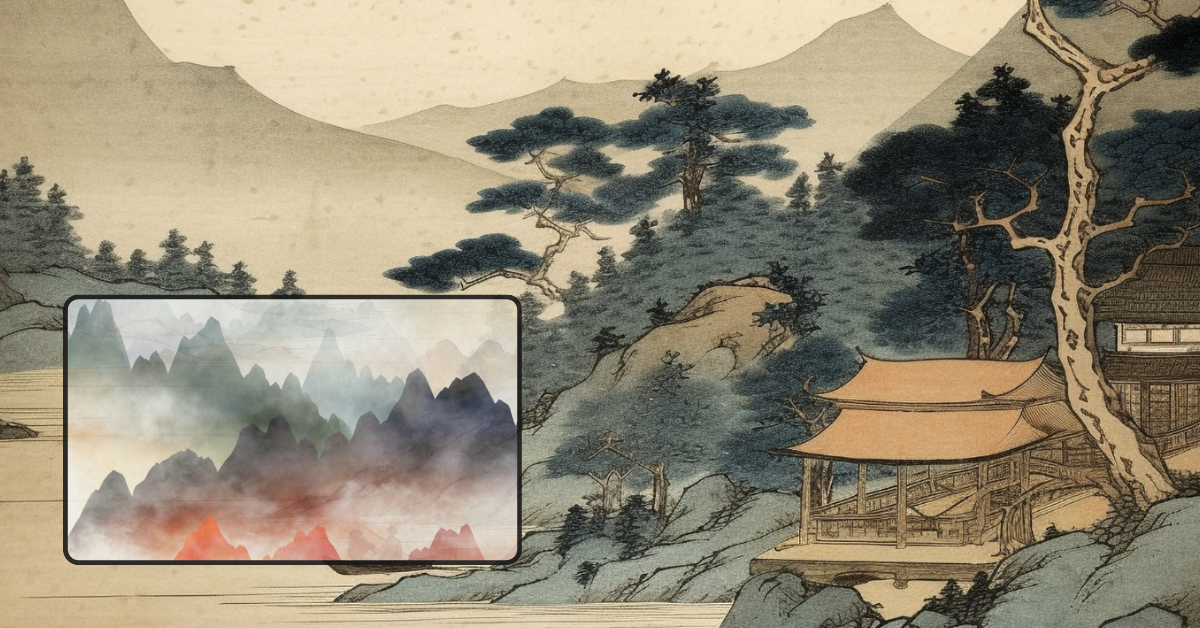Unlock the Secrets of Chinese Art in Five Friendly Steps
- Posted on 14th November 2025
- in Blog
- by Antique Art Buyers
Chinese art can seem mysterious at first glance. You might admire a painting, a porcelain vase, or a carved jade piece and wonder, “This is beautiful, but what does it really mean?” If you’ve ever felt this way, you’re not alone. Many people appreciate Chinese art but hesitate to explore it further because it appears too complex, ancient, or challenging to understand.
But here’s the good news: you don’t have to be an expert to enjoy Chinese art. All you need is a simple, friendly guide to make the journey enjoyable. And that’s exactly what this blog will provide, making Chinese art accessible to everyone.
Chinese art is fascinating, but it often feels overwhelming for beginners. As one of the oldest and most diverse art forms in the world, its history stretches back thousands of years. Imagine the Song Dynasty, where a renowned painter named Fan Kuan spent days observing nature in solitude before creating intricate landscapes that captured not just the physical, but the spiritual essence of the world around him. Other famous Chinese artists include Zhang Daqian, Xu Beihong, and Qi Baishi. Chinese art includes ink wash paintings, calligraphy, pottery, textiles, jade carvings, bronze works, and much more. With countless styles, symbols, dynasties, and techniques, it’s easy to wonder where to begin.
Many beginners struggle with questions like: “What makes Chinese art so special?”
- Why do people use symbols like dragons, mountains, and lotus flowers all the time?
- How can I tell if a piece is worth something?
- Is it hard or expensive to collect Chinese art?
This confusion can keep people from going deeper—missing out on the beauty, history, and even the joy of collecting Chinese art.

Why Bother Understanding Chinese Art?
Imagine standing before a delicate ink painting. The brushwork is gentle, the composition serene, carrying the scent of the ink as it whispers across the textured paper. Each stroke seems to echo in the quiet room, yet its deeper meaning escapes you. Without understanding the story, the symbolism, or the artist’s intention, the experience feels incomplete.
Or imagine holding a piece of old Chinese porcelain—perhaps from a renowned kiln, with a glaze so smooth it feels like touching liquid silk, adorned with symbols for health, luck, or prosperity. The coolness of the porcelain and its subtle shine draw you in, but without context, you could overlook something significant—both in history and in value.
Chinese art truly comes alive once you understand its meaning. Without guidance, though, its beauty can remain a mystery. The good news? Learning about Chinese art can be simple, enjoyable, and rewarding. Let’s break it down so anyone can discover the magic behind these masterpieces, sparking a sense of intrigue and excitement.
1. Begin with the story behind the art
Nature, spirituality, and philosophy profoundly shape Chinese art. Rather than focusing solely on appearance, Chinese artists emphasize feeling, harmony, and interconnectedness. For example, mountains represent strength, water symbolizes tranquility, and bamboo signifies resilience. Once you recognize these meanings, Chinese art becomes far easier to appreciate.
2. Spot recurring symbols and themes
Here are some symbols that are common:
- Dragon: strength and protection
- Phoenix: peace and renewal
- Peony: wealth and honor
- Lotus: purity and spiritual growth
- Crane: longevity and good fortune
Knowing what these symbols mean will help you “read” the art with confidence.
3. Get to know the different styles of Chinese art
The three main groups are:
Ink Drawings
These are all about simple brushwork. The goal is to show how you feel, not to be perfect.
Ceramics and Porcelain
China is known for its blue-and-white porcelain, colorful famille rose patterns, and famous kilns like Jingdezhen.
Carvings and Jade
People say jade is the “stone of heaven” because it symbolizes purity and goodness. Many jade carvings depict animals, flowers, or mythical creatures.
Once you know these basics, you’ll never look at Chinese art the same way again.
4. Don’t Just Focus On The Technique
A lot of the time, Chinese artists paint more than what you can see. They want to get the essence of the subject. That’s why a painting might look simple; it’s meant to make you feel something, not just look at it.
For example, in Chinese ink wash painting, the artist uses a brush and ink to create a piece that captures the essence of the subject, often a landscape or a figure, in a few simple strokes. This process, known as ‘xieyi’ or ‘freehand style’, is about expressing the artist’s feelings and thoughts, not just replicating the subject.
Once you start to feel this energy, each piece will talk to you in a more meaningful way.
5. Collecting Chinese Art Made Simple
You don’t need much money to enjoy collecting Chinese art. Beginners often start with small ink paintings, decorative porcelain, reproduction pieces, and modern Chinese prints.
You can confidently look at older or more valuable pieces as you learn more. And the best part? Each piece you collect tells a story and makes your space more beautiful.
Final Thoughts
Understanding Chinese art isn’t as hard as it seems. It’s a journey filled with stories, symbols, and beauty. Chinese art is rich with meaning—just take a moment to look, reflect, and get started, whether you’re a culture enthusiast or a budding collector.
If you follow these simple steps, you’ll soon enjoy Chinese art with confidence and curiosity, reassuring you that the learning process is straightforward and manageable.
👉Ready to find the true value of your Chinese art? Get in touch with Antique Art Buyers for expert support and a fair offer.




